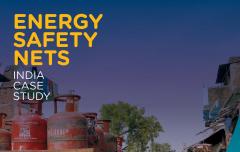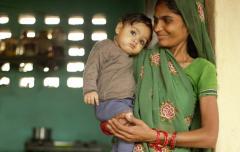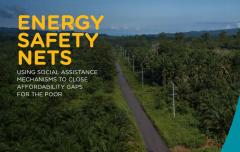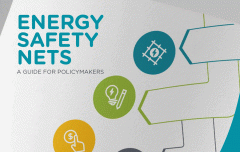Subsidies for energy access need to be gender sensitive: An example from India
By Sasmita Patnaik and Shaily Jha, Council on Energy, Environment and Water (CEEW)
Policymakers recognize that supporting energy access should be part of an overall approach to fighting poverty. Access to clean and reliable energy not only protects vulnerable people from the individual harms of relying on dirty fuels (e.g. exposure to fumes from burning firewood indoors), it also improves their economic prospects, helping them climb out of poverty.
It is encouraging to see a growing number of governments developing social assistance mechanisms that are specific to clean cooking and electricity access, including targeted subsidies for providing initial connections and ongoing consumption. However, these types of initiatives need to recognize that men and women might not benefit from these subsidies equally.
Most development policies are designed or implemented to address household poverty. It is presumed that individuals are part of households and that the benefits from any household-directed welfare should trickle down equally to the individuals in the household. But this ignores that men and women living under the same roof not only have different income levels (and hence poverty levels), but also different social roles and agency when it comes to decisions around energy. If a policy isn’t sensitive to these differences, then it may not achieve the impact it intended.
Here’s an example to consider based on findings from the largest multidimensional panel data on energy access (ACCESS 2018) in India. In 2016, the Government of India launched the Pradhan Mantri Ujjwala Yojana, a scheme meant to help vulnerable households avoid indoor air pollution caused by burning solid fuels. Women were at the center of this scheme since it was acknowledged that it would lead to their empowerment by reducing drudgery and offering health benefits from using clean cooking.
Household-level poverty data led the government to identify households eligible for a subsidy for a liquefied petroleum gas (LPG) connection. The scheme also offered to credit a woman’s bank account with the subsidy linked to the purchase of LPG refills. (1)
However, the scheme overlooked two important factors that influence intra-household decision making. First, within these poor households, women’s ability and agency to pay for their needs were much lower than those of men. Second, the patriarchal setup of the household meant restrictions on women’s mobility. Women were given the opportunity to purchase LPG refills and then receive a credit, but they were not empowered to materialize this offer.
More than two-thirds of LPG-using households in low-income states reported that a man decided when to order a refill. Only 17 percent of the households reported that women of the household placed orders for LPG refills. Despite being the primary cook, women depended on male members not only to pay for the refill but also to transport the refilled cylinder from dealers. Another study showed that the inability of women to travel to the dealer location with heavy LPG cylinders added to the average delay in the purchase of LPG refills. As a result, despite the subsidy, households continued to stack LPG with solid fuels producing indoor pollution.
The lesson learned from this example is that intra-household gender dynamics matter when it comes to designing social assistance schemes for energy access. Yet there is a paucity of gender-aggregated data on energy use and purchasing habits for governments to rely upon in forming effective policies. Further research is needed to fill the data and evidence gap.
As a step in the right direction, CEEW worked with Sustainable Energy for All (SEforALL) in developing the Energy Safety Nets research, which sheds light on several gender aspects of energy access for vulnerable populations. More work along these lines would help us understand energy poverty at the individual level and enable policies that could potentially work through the intra-household power dynamics with respect to energy choices.
The Energy Safety Nets research series includes a case study on social assistance mechanisms in India, developed by CEEW.
(1) Jain, Abhishek, Saurabh Tripathi, Sunil Mani, Sasmita Patnaik, Tauseef Shahidi, and Karthik Ganesan: Access to Clean Cooking Energy and Electricity: Survey of States 2018. New Delhi, CEEW




